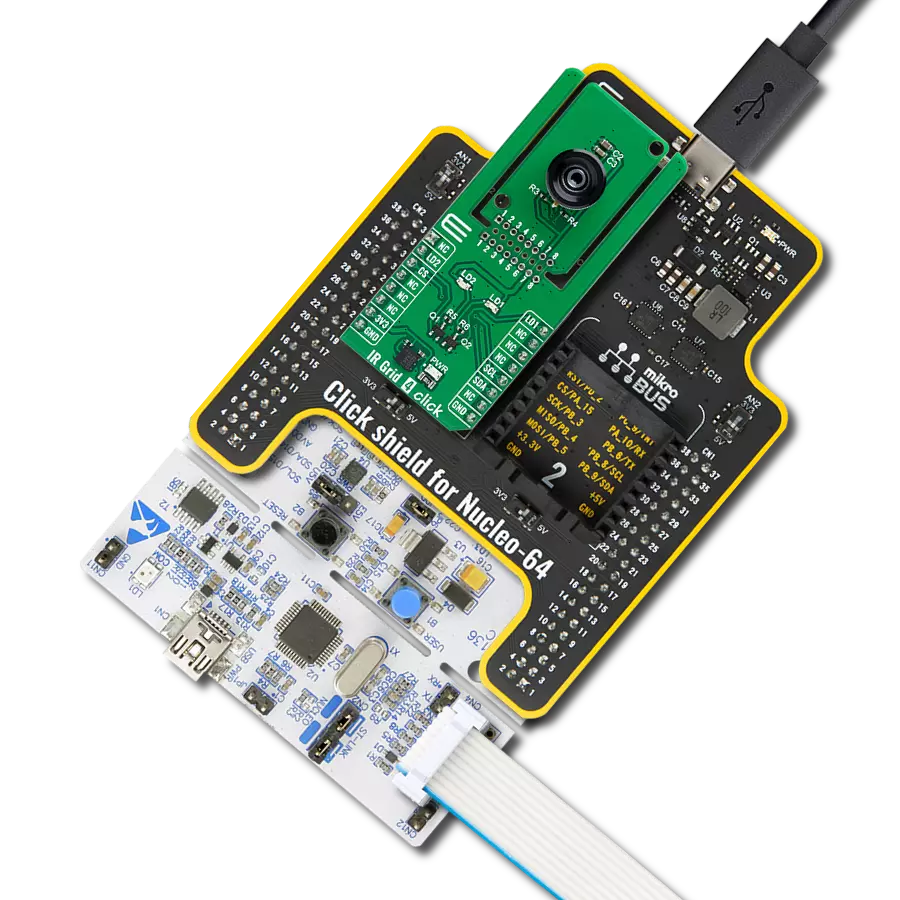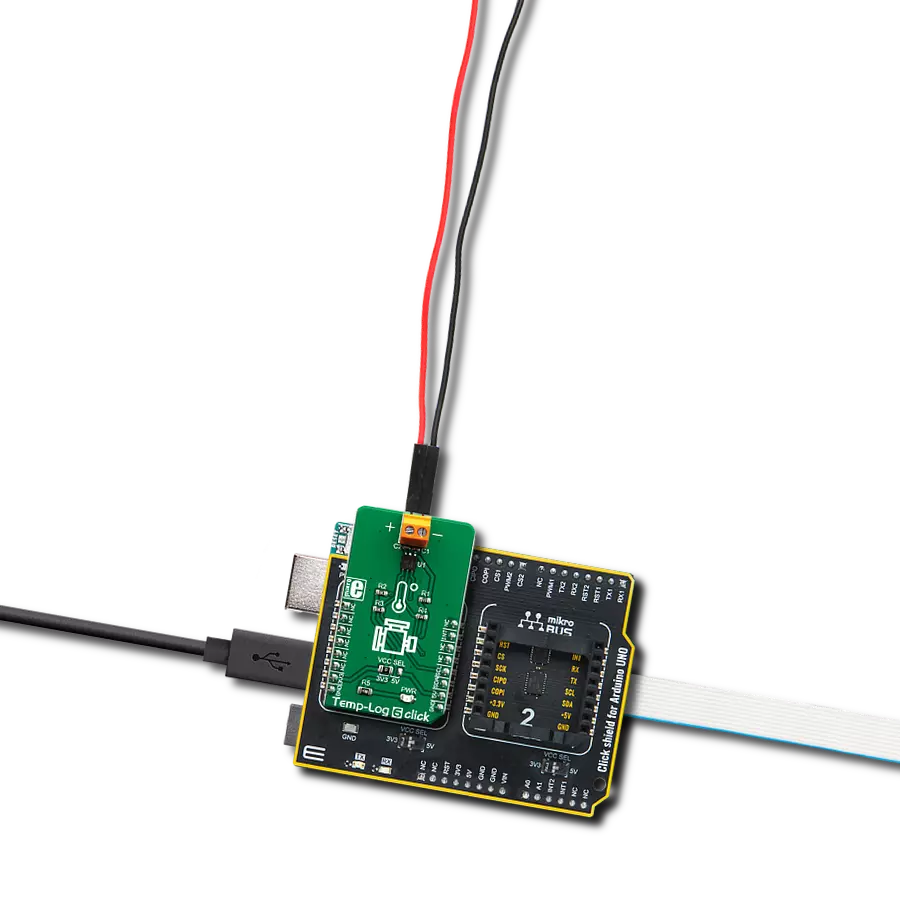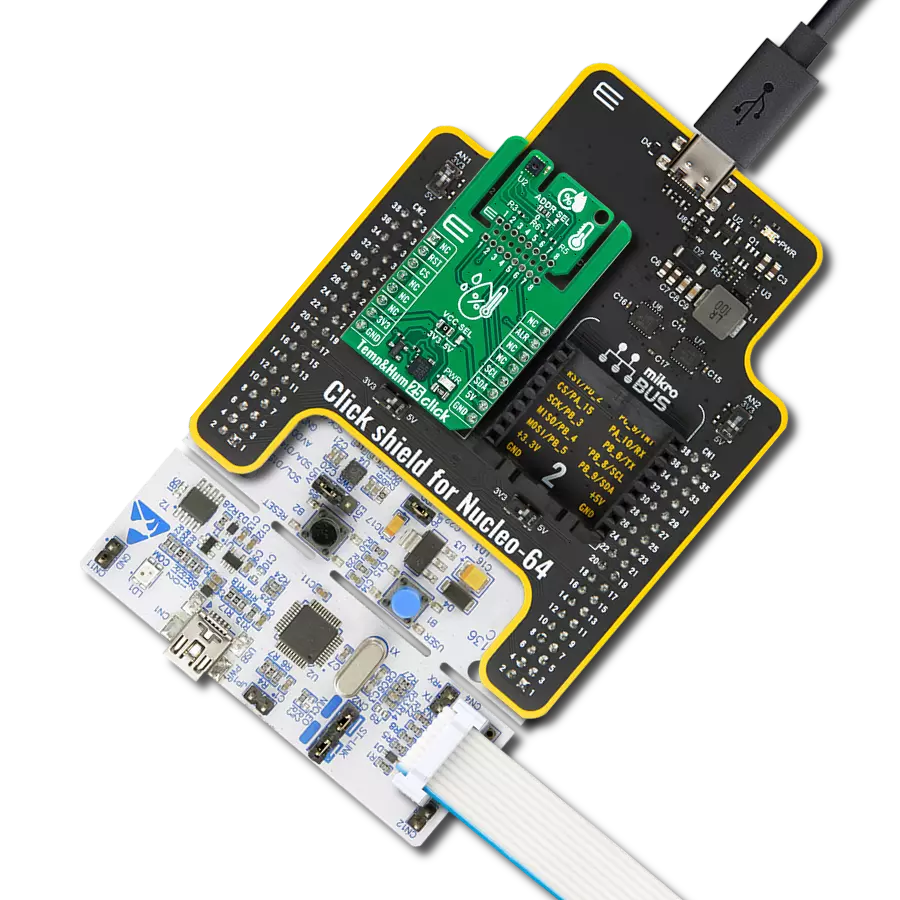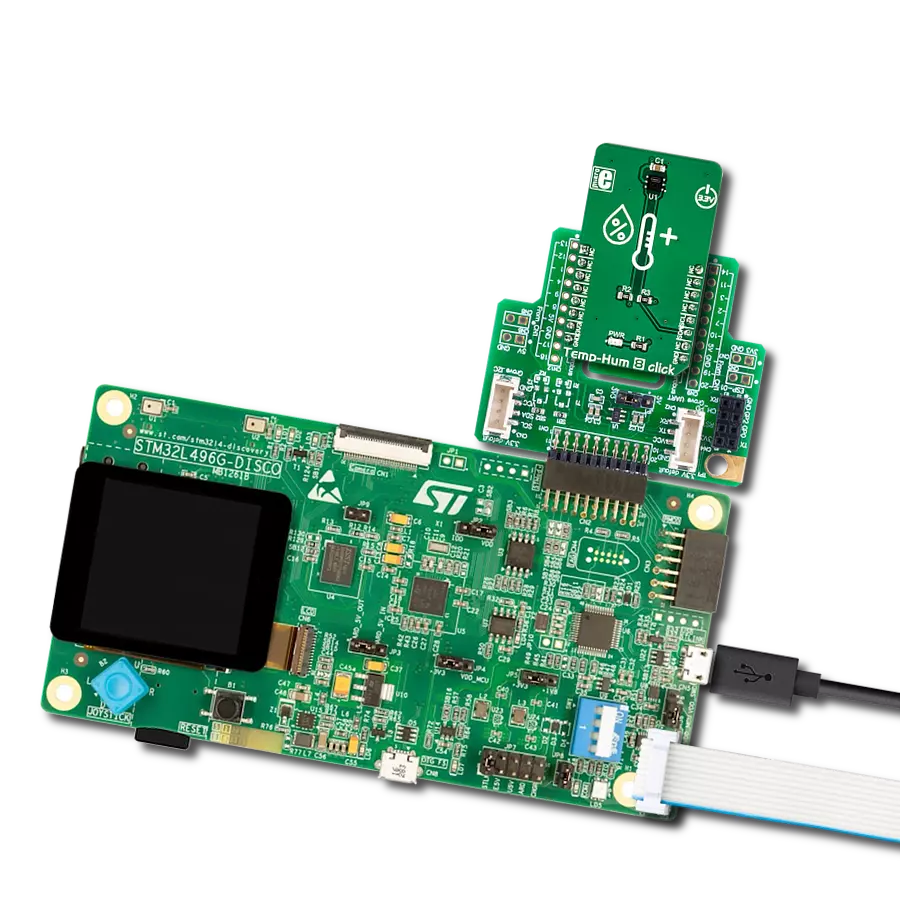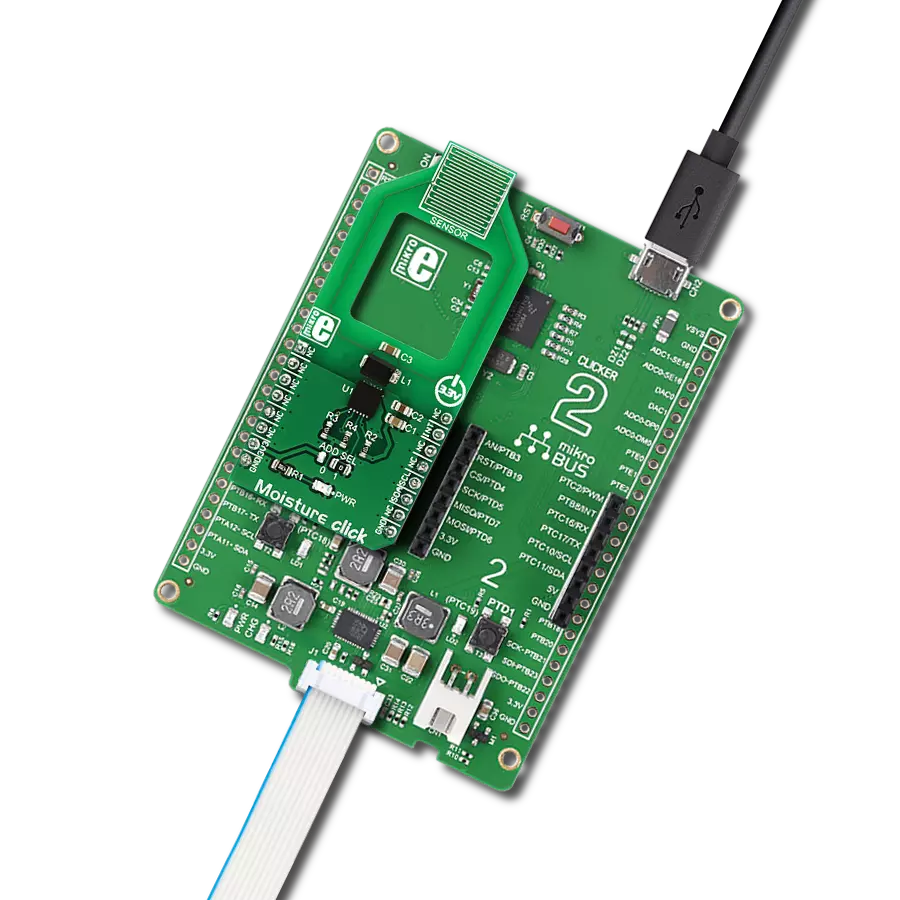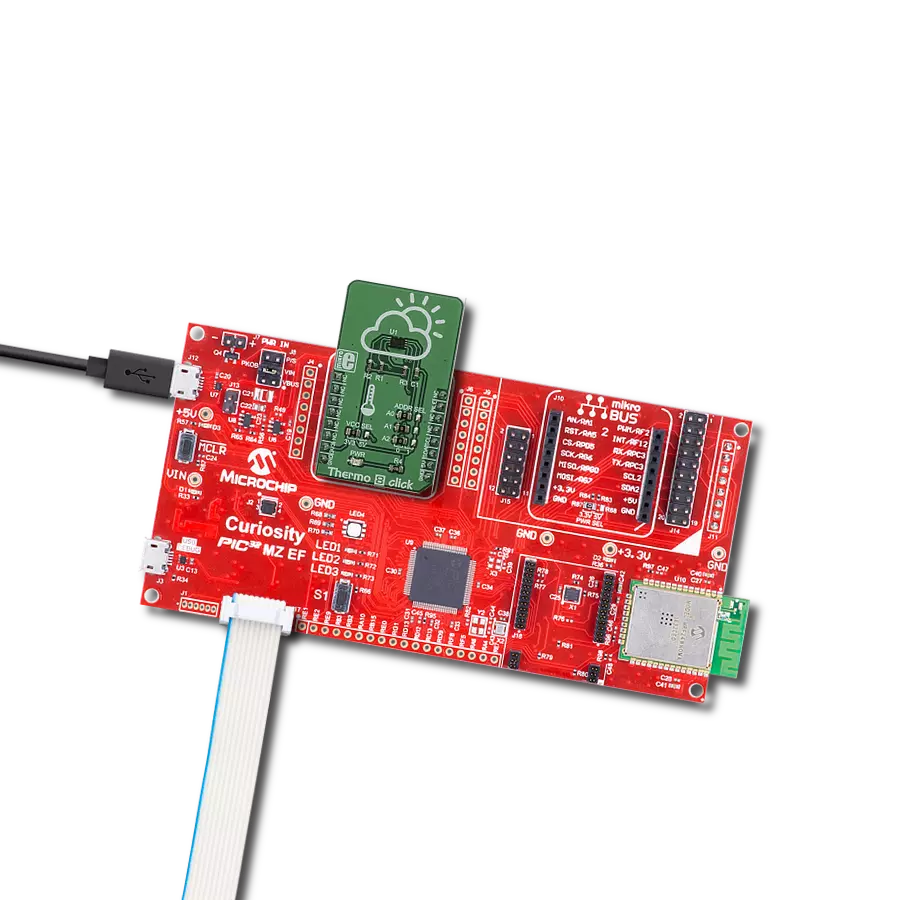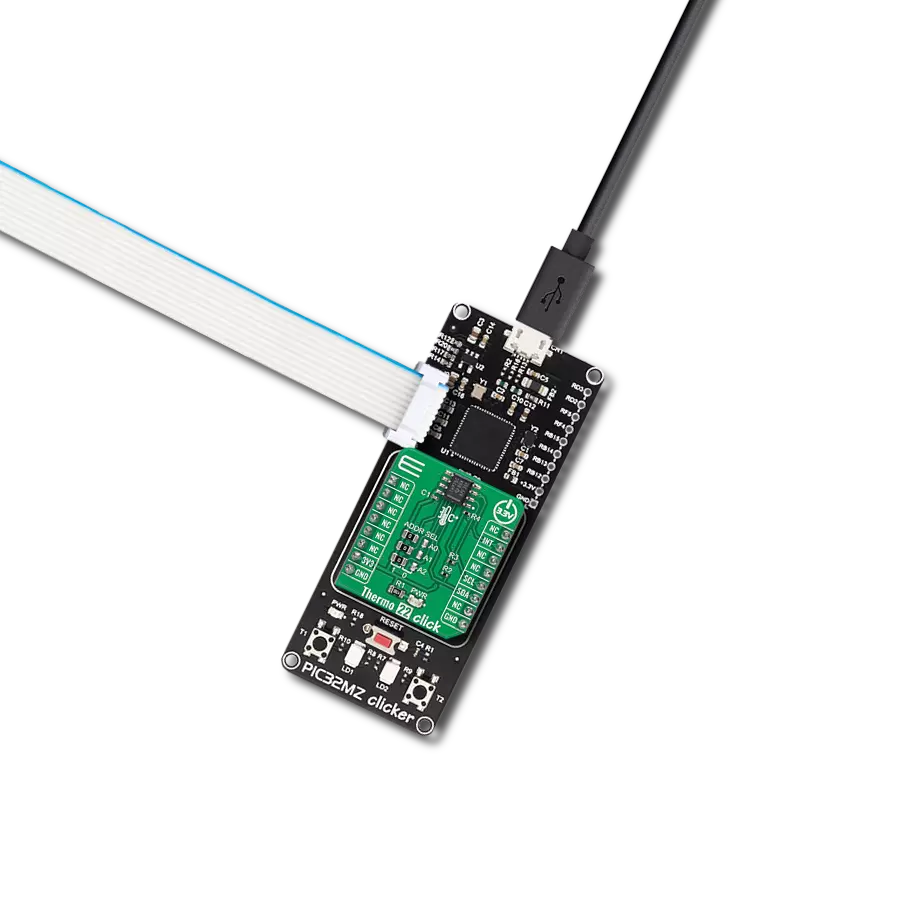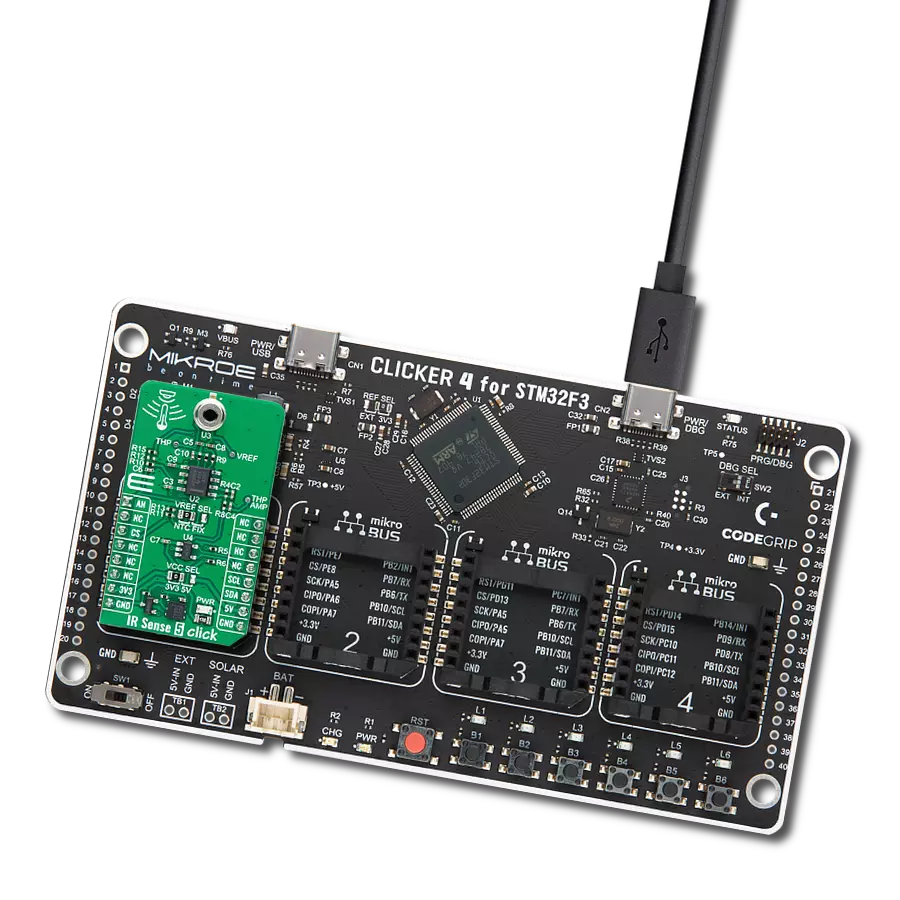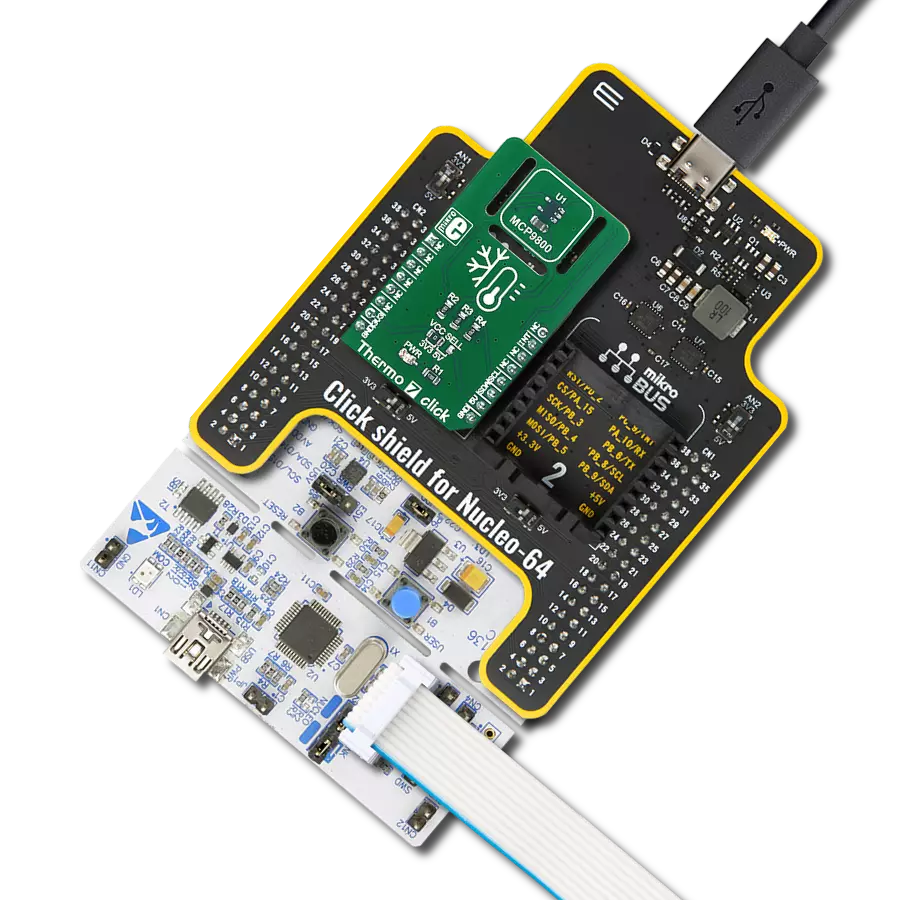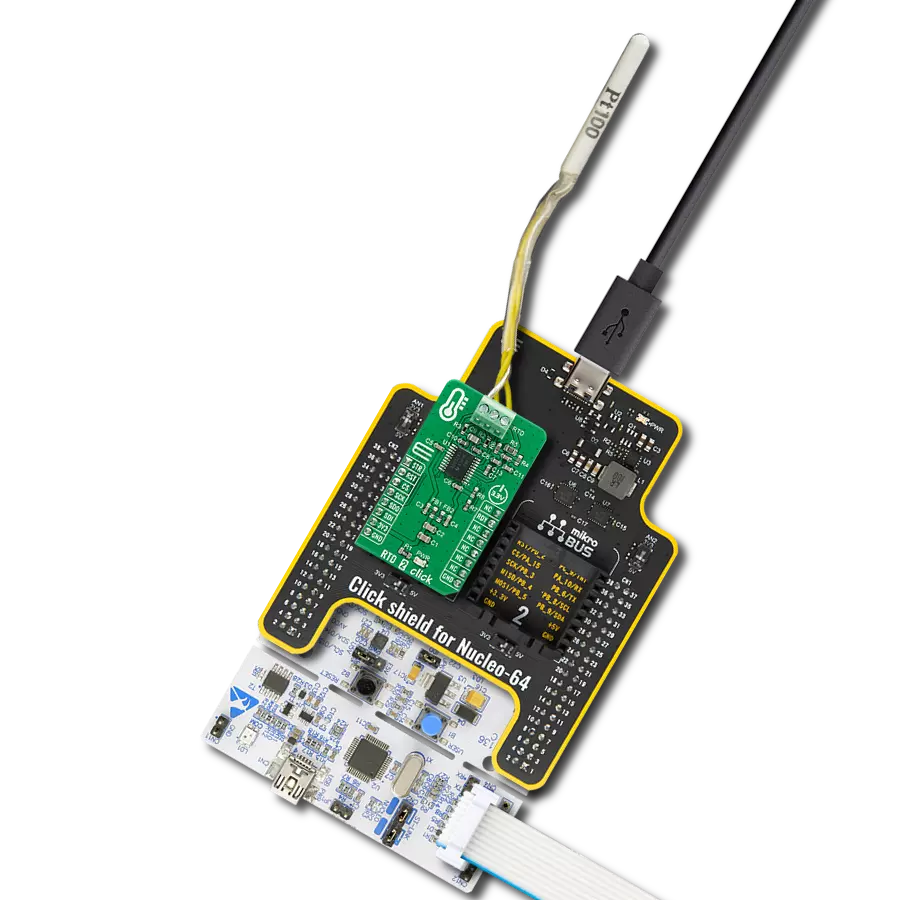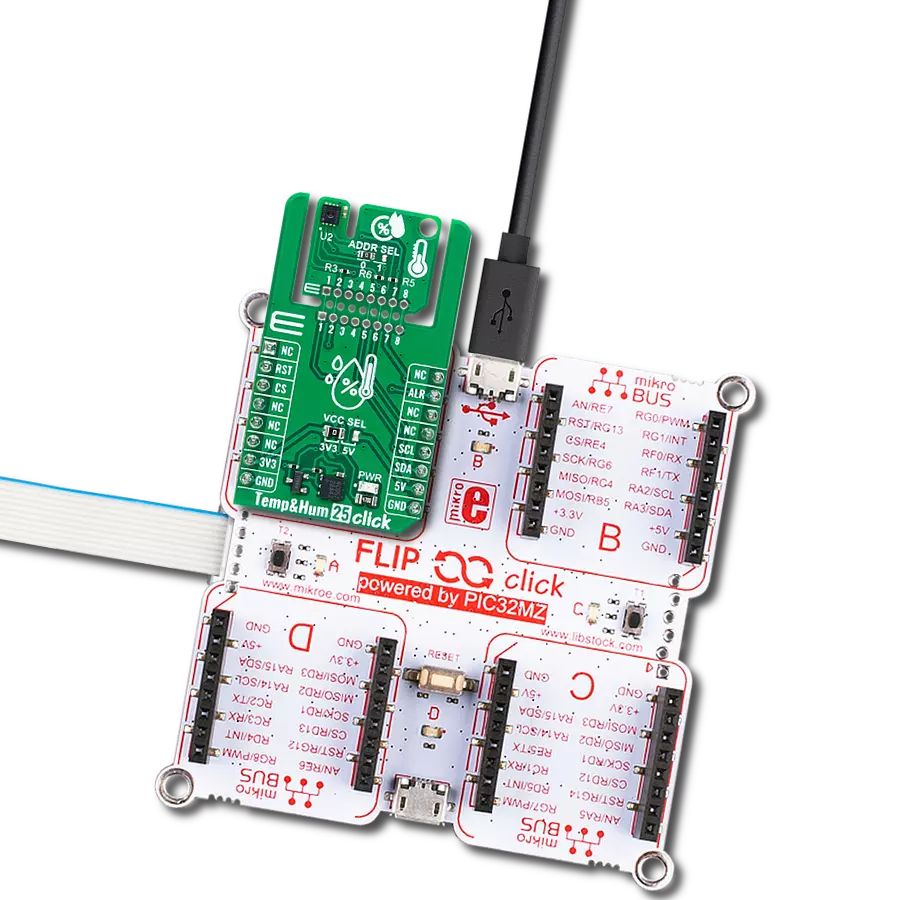We ensure your temperature insights are preserved for the long run with our extended EEPROM memory.
A
A
Hardware Overview
How does it work?
Temp-Log 5 Click is based on the CAT34TS02, an accurate temperature sensor IC with integrated serial presence detect EEPROM from ON semiconductor that combines a JC42.4 compliant Temperature Sensor (TS) with 2 Kb of Serial Presence Detect (SPD) EEPROM. Temperature sensor measures and stores temperatures at least 10 times in second, allowing it to be retrieved by the host MCU via the I2C interface. The result can be compared to critical limits, stored into internal registers. This allows the sensor to reduce the processing workload of the host MCU by employing the trigger limits mechanism: by asserting the EVENT line to a LOW logic level, the CAT34TS02 is able to wake up the host MCU, reducing the power consumption. The EVENT pin is routed to the INT pin of the mikroBUS™. The CAT34TS02 IC can be configured to trigger an EVENT in three different modes: Interrupt mode, Comparator mode,
and Critical Temperature mode. When set in the Interrupt Mode, the EVENT output will be asserted every time the temperature crosses one of the alarm limits. Once the temperature exceeds the critical limit, the EVENT remains asserted as long as the temperature stays above the critical limit. The EVENT can be cleared by setting a bit in a corresponding register (must be cleared by the software). However the pin will remain asserted as long as the temperature exceeds the critical limits. In the Comparator mode, the EVENT pin is asserted whenever the temperature is outside the predefined limit values, and deasserted as soon as the temperature drops under the limit (no need to clear the bit by the software). If set in the Critical Temperature Mode, the EVENT pin will be asserted only if the temperature exceeds a critical threshold limit. The limit values can be programmed via the corresponding registers. CAT34TS02 IC uses the
I2C/SMBus protocols to communicate with the host MCU. Its I2C bus pins are routed to the mikroBUS™ I2C pins and are pulled to a HIGH logic level by the onboard resistors. The I2C slave address of the CAT34TS02 IC can be selected by ADDR pins A0, A1 and A2: LOW logic level clears the corresponding address bit (GND), while HIGH logic level sets the bit (VCC). This can be done using a group of onboard jumpers, positioned under the label ADDR SEL. This Click board™ can be operated only with a 3.3V logic voltage level. The board must perform appropriate logic voltage level conversion before using MCUs with different logic levels. Also, it comes equipped with a library containing functions and an example code that can be used as a reference for further development.
Features overview
Development board
Nucleo-64 with STM32F091RC MCU offers a cost-effective and adaptable platform for developers to explore new ideas and prototype their designs. This board harnesses the versatility of the STM32 microcontroller, enabling users to select the optimal balance of performance and power consumption for their projects. It accommodates the STM32 microcontroller in the LQFP64 package and includes essential components such as a user LED, which doubles as an ARDUINO® signal, alongside user and reset push-buttons, and a 32.768kHz crystal oscillator for precise timing operations. Designed with expansion and flexibility in mind, the Nucleo-64 board features an ARDUINO® Uno V3 expansion connector and ST morpho extension pin
headers, granting complete access to the STM32's I/Os for comprehensive project integration. Power supply options are adaptable, supporting ST-LINK USB VBUS or external power sources, ensuring adaptability in various development environments. The board also has an on-board ST-LINK debugger/programmer with USB re-enumeration capability, simplifying the programming and debugging process. Moreover, the board is designed to simplify advanced development with its external SMPS for efficient Vcore logic supply, support for USB Device full speed or USB SNK/UFP full speed, and built-in cryptographic features, enhancing both the power efficiency and security of projects. Additional connectivity is
provided through dedicated connectors for external SMPS experimentation, a USB connector for the ST-LINK, and a MIPI® debug connector, expanding the possibilities for hardware interfacing and experimentation. Developers will find extensive support through comprehensive free software libraries and examples, courtesy of the STM32Cube MCU Package. This, combined with compatibility with a wide array of Integrated Development Environments (IDEs), including IAR Embedded Workbench®, MDK-ARM, and STM32CubeIDE, ensures a smooth and efficient development experience, allowing users to fully leverage the capabilities of the Nucleo-64 board in their projects.
Microcontroller Overview
MCU Card / MCU
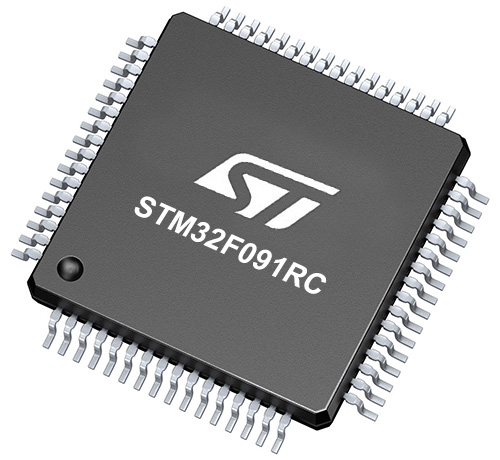
Architecture
ARM Cortex-M0
MCU Memory (KB)
256
Silicon Vendor
STMicroelectronics
Pin count
64
RAM (Bytes)
32768
You complete me!
Accessories
Click Shield for Nucleo-64 comes equipped with two proprietary mikroBUS™ sockets, allowing all the Click board™ devices to be interfaced with the STM32 Nucleo-64 board with no effort. This way, Mikroe allows its users to add any functionality from our ever-growing range of Click boards™, such as WiFi, GSM, GPS, Bluetooth, ZigBee, environmental sensors, LEDs, speech recognition, motor control, movement sensors, and many more. More than 1537 Click boards™, which can be stacked and integrated, are at your disposal. The STM32 Nucleo-64 boards are based on the microcontrollers in 64-pin packages, a 32-bit MCU with an ARM Cortex M4 processor operating at 84MHz, 512Kb Flash, and 96KB SRAM, divided into two regions where the top section represents the ST-Link/V2 debugger and programmer while the bottom section of the board is an actual development board. These boards are controlled and powered conveniently through a USB connection to program and efficiently debug the Nucleo-64 board out of the box, with an additional USB cable connected to the USB mini port on the board. Most of the STM32 microcontroller pins are brought to the IO pins on the left and right edge of the board, which are then connected to two existing mikroBUS™ sockets. This Click Shield also has several switches that perform functions such as selecting the logic levels of analog signals on mikroBUS™ sockets and selecting logic voltage levels of the mikroBUS™ sockets themselves. Besides, the user is offered the possibility of using any Click board™ with the help of existing bidirectional level-shifting voltage translators, regardless of whether the Click board™ operates at a 3.3V or 5V logic voltage level. Once you connect the STM32 Nucleo-64 board with our Click Shield for Nucleo-64, you can access hundreds of Click boards™, working with 3.3V or 5V logic voltage levels.
Used MCU Pins
mikroBUS™ mapper
Take a closer look
Click board™ Schematic

Step by step
Project assembly
Software Support
Library Description
This library contains API for Temp-Log 5 Click driver.
Key functions:
templog5_write_eeprom- This function write data to the EEPROM address.templog5_read_eeprom- This function read data to the EEPROM address.templog5_read_data- This function read from the TS register.
Open Source
Code example
The complete application code and a ready-to-use project are available through the NECTO Studio Package Manager for direct installation in the NECTO Studio. The application code can also be found on the MIKROE GitHub account.
/*!
* \file
* \brief TempLog5 Click example
*
* # Description
* This Click measures and stores temperatures at least 10 times in second,
* allowing it to be retrieved by the host MCU via the I2C interface.
* The result can be compared to critical limits, stored into internal registers.
*
* The demo application is composed of two sections :
*
* ## Application Init
* Initializes driver init, Test comunication, EEPROM write/read test and
* configuration device for measurement.
*
* ## Application Task
* Reads Temperature data and logs data to the USBUART every 1 sec.
*
*
* \author MikroE Team
*
*/
// ------------------------------------------------------------------- INCLUDES
#include "board.h"
#include "log.h"
#include "templog5.h"
// ------------------------------------------------------------------ VARIABLES
static templog5_t templog5;
static log_t logger;
// ------------------------------------------------------ APPLICATION FUNCTIONS
void application_init ( void )
{
log_cfg_t log_cfg;
templog5_cfg_t cfg;
uint16_t tmp;
uint8_t ee_test_write[1];
uint8_t ee_test_read[1];
/**
* Logger initialization.
* Default baud rate: 115200
* Default log level: LOG_LEVEL_DEBUG
* @note If USB_UART_RX and USB_UART_TX
* are defined as HAL_PIN_NC, you will
* need to define them manually for log to work.
* See @b LOG_MAP_USB_UART macro definition for detailed explanation.
*/
LOG_MAP_USB_UART( log_cfg );
log_init( &logger, &log_cfg );
log_info( &logger, "---- Application Init ----" );
// Click initialization.
templog5_cfg_setup( &cfg );
TEMPLOG5_MAP_MIKROBUS( cfg, MIKROBUS_1 );
templog5_init( &templog5, &cfg );
tmp = templog5_read_data( &templog5, TEMPLOG5_REG_MANUFACTURER_ID );
if ( tmp == TEMPLOG5_MANUFACTURER_ID )
{
log_info( &logger, "Comunication OK!!!" );
}
else
{
log_info( &logger, "Comunication ERROR!!!" );
while( 1 );
}
ee_test_write[ 0 ] = 0xAA;
templog5_write_eeprom( &templog5, 0x10, &ee_test_write[ 0 ], 1 );
Delay_ms ( 200 );
templog5_read_eeprom( &templog5, 0x10, &ee_test_read[ 0 ], 1 );
log_info( &logger," EEPROM TEST READ: %u\r\n", ee_test_read[ 0 ] );
templog5_default_cfg ( &templog5 );
}
void application_task ( void )
{
float temperature;
temperature = templog5_get_temperature( &templog5 );
log_info( &logger,"Temperature: %.2f\r\n", temperature );
Delay_ms ( 1000 );
}
int main ( void )
{
/* Do not remove this line or clock might not be set correctly. */
#ifdef PREINIT_SUPPORTED
preinit();
#endif
application_init( );
for ( ; ; )
{
application_task( );
}
return 0;
}
// ------------------------------------------------------------------------ END
Additional Support
Resources
Category:Temperature & humidity




















